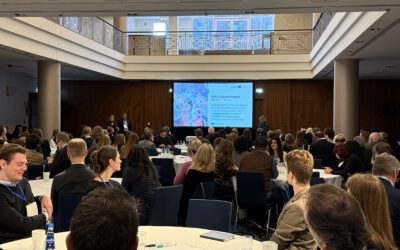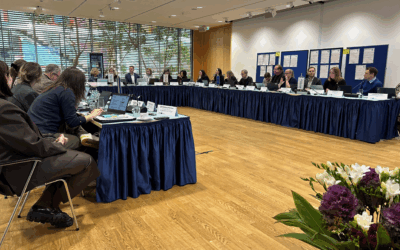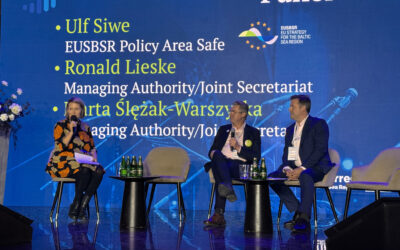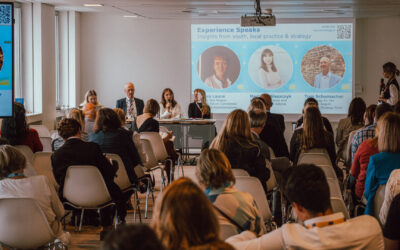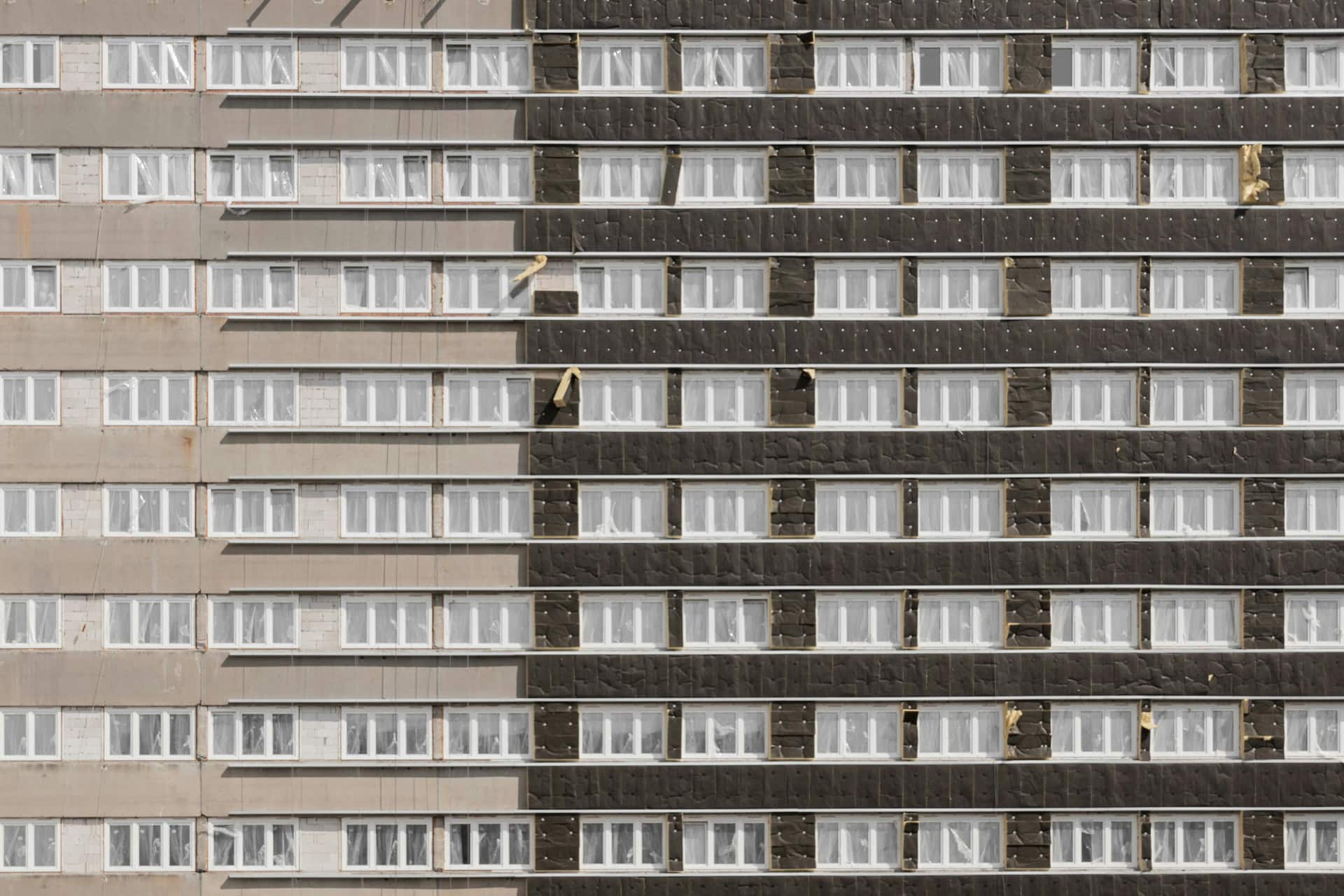
3 September 2024
Make yourself safe at home!
Written by Anna Gałyga
Interreg says “no” to hazardous chemicals in construction materials, and calls for municipalities to set good examples and inspire others in the Baltic Sea region and beyond.
Know your enemy
My home is my castle… But what if it’s not a safe one? “We’ve identified that there’s a gap in understanding that some construction materials can actually be dangerous,” explains Kai Klein from the Baltic Environmental Forum Estonia, a partner in the Interreg project NonHazCity 3. In fact, many conventional construction materials used today to build and renovate buildings still contain hazardous substances that may harm people’s health and the planet. These include phthalates, PFAS, bisphenols, biocides and chlorinated paraffins – just to name some of them – and may hide in paints, flooring, cables, adhesives and other materials.
Although some producers exploit gaps in the current legal frameworks and do not sufficiently inform consumers what the materials are made from, others simply miss knowledge how to transform their practices to make them non-toxic, circular, and climate-neutral. On top, there are consumers: municipalities, construction companies, designers and homeowners, who lack knowledge and tools to select wiser.
Who can help?
To reverse the trend and make homes and offices in the Baltic Sea region safer, more than 20 organisations from eight countries from around the Baltic Sea joined forces to increase the awareness about hazardous chemicals hidden in construction materials. “We have architects from Latvia and Germany, knowledge about hazardous substances from Estonia, good municipal expertise from Sweden and, procurement experts from Finland,” Kai explains how bringing together people from different countries, professions and expertise in the Interreg project NonHazCity 3 allows for mutual learning and comprehensive handling the challenge of hazardous substances in construction materials.
Discover the solution!

NonHazCity 3 is fighting hazardous chemicals by actively filling up the knowledge gaps on how to avoid them. Working as if there were no borders, the project empowers municipalities to commit to achieving sustainability and environmental goals. A key element here is education provided by a tailored programme covering aspects of e.g. green public procurement, integrating concepts of hazardous substances and circularity into building certification systems. Practical catalogues with safe materials to rely on as well as guides and factsheets complement the picture.
Increasing the knowledge among municipalities goes hand in hand with working with construction companies, designers and architects who are usually the ones to select or advise on selecting construction materials for their clients.
Finally, with the help of Interreg, also homeowners can safely renovate their homes on their own. Thanks to a mobile app and a DIY guide on tox-free, circular and climate-friendly renovation of my home, access to new knowledge is at hand.
Get inspired by Interreg
Although the project has only three years to trigger a change, it has already proven that lots can be done: from increasing awareness to changed legal frameworks and an actual elimination of hazardous substances: this is how NonHazCity 3 is pushing forward a vision of healthy living in healthy buildings, constructed with non-toxic, circular, and climate-neutral materials.
The project is also already making a difference is the lives of people, starting from those directly involved in the project: “I am grateful to the project for not only opening my eyes to the significance of this problem for each of us, but also for bringing about changes in my daily life. The project has taught me that I myself can avoid or reduce the risk of exposure to hazardous substances by making good choices about the everyday products I use,” explains Normunds Vagalis from Riga City Council, project manager of NonHazCity 3.
Into the spotlight!
Normunds Vagalis:
“Municipalities can do a lot to reduce exposure from hazardous substance of people in homes, offices and day cares. The city can and must act in order to reduce exposure of people and ecosystems to hazardous substances.”
Yet, they cannot do it alone. This is how one of vital Interreg powers comes into play: efficient rolling out best practices across the Baltic Sea region. To reinforce the work of the project, NonHazCity 3 in cooperation with World Future Council, is calling for municipalities to speak up and showcase their best policies, laws and legal frameworks that help create a tox-free, circular and climate neutral building environment in their communities. Best examples will receive the NonHazCity award that shall inspire other decision-makers, business and individuals to make more sustainable choices when selecting construction materials in their work. Find out more information and help NonHazCity 3 find the champions in fighting hazardous substances in the Baltic Sea region!
#DidYouKnow
NonHazCity 3 builds on the experience of two Interreg projects tackling hazardous substances hidden e.g. in cleaning detergents, toys or kitchen utilities at homes and workplaces: NonHazCity and NonHazCity 2. Check them out and make the environment around you tox-free!
This is how Normunds Vagalis from Riga City Council, project manager of NonHazCity 3, reflects on the project’s previous editions: “Riga as a municipality experienced a steep learning curve while actively participating in all project activities from the very beginning, learning from our Scandinavian partners in chemical action planning, chemical smart procurement and capacity building within municipality.”
More recent news
Designing Interreg Baltic Sea Region that belongs to everyone
10 December 2025 Designing Interreg Baltic Sea Region that belongs to everyone Written by Eeva Rantama What if the next Interreg Baltic Sea Region...
Monitoring the Programme’s progress: transnational cooperation in the making
Representatives from nine Programme area countries gathered in Berlin on 19-20 November 2025 to review the progress of the Programme’s implementation and start preparing for the post-2027 period.
Beyond Borders: Turning Interreg Results into Policy Action
At this year’s EUSBSR Annual Forum in Sopot, the session “Beyond Borders: Interreg Results in Action for a Resilient and Safe Baltic Sea Region” showcased how Interreg Baltic Sea Region projects are transforming challenges into policy-relevant results that strengthen resilience, safety, and cooperation across the region. The session brought together project partners, EUSBSR policy area coordinators, members of the Programme Monitoring Committee and young participants to explore what it takes to turn project outcomes into lasting policy impact.
How territorial cooperation builds us a home: the Baltic Sea region example
A room full of people waving their green and orange cards, prominent panelists on stage, and a clear hero of the day: territorial cooperation, making the Baltic Sea region feel like home. The joint session during this year’s EU Week of Regions and Cities was filled with positive energy, commitment and hopes for the future. What stood out most?



